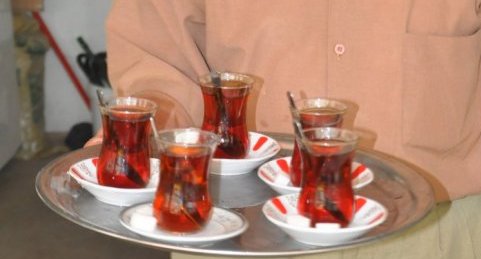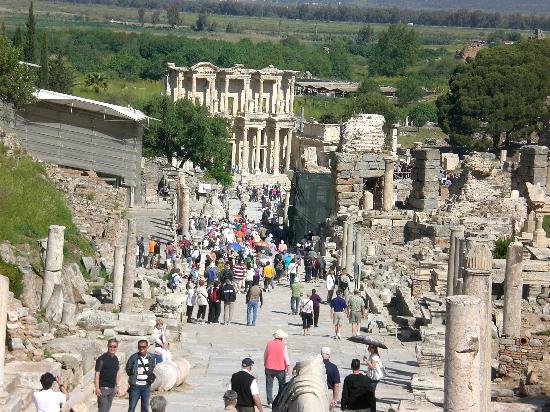|
17 September, 2014
WEDNESDAY |
|
Click here
|
|
|
|
On the Road to Ephesus The first stop of the day took us to a local museum, where dioramas depicting rural life in Turkey were on display. The various examples indicated how difficult and labor intensive life was for the Turkish people living in the countryside. My favorite diorama was the Whirling Dervishes. This display was so authentic it even had the 7 Teachings of Rumi posted on the door. However, the highlight of the museum was the long hall, which held detailed models of a Turkish village, circa 1950. My favorite scene was the wedding ceremony at the bride’s house. This scene depicted a variety of lovely and colorful costumes worn by the bride, her family and the guests. We enjoyed tea in the museum garden where we feasted on freshly picked figs and Turkish Simit bread. In preparation for our visit to the Ephesus, Meli shared background information on one of the greatest ruined cities in the western world. Interesting facts included: · A Greek city was built here in 1200 BC. · Gained fame as a center for the worship of Artemis, the Mother Goddess of Ephesus · People from around the world came to this settlement and built a huge temple to the goddess Artemis. · The temple to Artemis became one of the 7 Wonders of the Ancient World. · The temple was destroyed by a man made fire, and only one pillar was left standing. Our bus climbed up a steep, windy road thick with pine trees, we were on our way to the House of Mary. When we arrived we saw a wall full of papers which were prayers left by the visitors to this holy place. Meli explained that for several reasons this location is justified to be called the House of Mary. Biblical references and early church traditions verify that Mary spent her last years in the hills of Turkey. At the crucifixion Jesus told the apostle John to take care of his mother. Archeological and historical evidence from the Book of Revelation states that John came to Ephesus where he lived and died. Consequently he would have brought Mary with him, thus establishing the new holy family that was created at the foot of the cross. Meli called this place, “The House of Peace” because Muslims and Christians pray together here. Entering the small stone house I was struck by the silence and reverence of the visitors. A statue of Mary was located on a small altar, her outstretched arms seem to be welcoming us. My favorite part was listening to the prayerful chanting of the Polish people, both inside the house and outside during mass. As we arrived at Meli’s farm for lunch we were greeted by guinea hens, chickens, turkeys, dogs, and several cats. As expected, Mili’s kitchen was out of this world! Not your typical kitchen but a circular room with lovely green tiles, and numerous Turkish artifacts adorning the walls. Her domed ceiling was covered with green, bowed shaped tiles and colorful Turkish rugs were everywhere. Lunch was outside in a spacious patio where we were served a variety of salads and fresh lemonade. The main dish was Split Belly eggplant, delicious! The highlight of our visit was the tour of Meli’s spacious and beautiful home. June remarked, “Every corner has a little niche.” Hillary said, “It’s glorious!”. Bonnie said, “It should be featured in Architecture Digest.” Nancy declared, “It’s a magnificent example of the blending of ancient and modern Turkey”. My favorite thing about her house was that it was a wonderful reflection on her life, travels, beliefs, and passions. This afternoon we visited the third city of Ephesus, when it was at its hay day as a Roman port on the Aegean. Mali said that at one time 250,000 people called Ephesus their home. She noted that the huge crowds touring the city today were a good thing because it gave us an idea of the daily sounds and sights of this bustling ancient city. We encountered the Library of Celsus, a theatre with 30,000 seats, Temple of Domitian, the marketplace or Agora and the Colonnaded Street. The highlight for me was visiting the six terraced houses where beautiful and colorful mosaics and murals were displayed on the walls and floors of these Roman houses. Meli said the values the people of Ephesus embraced were, knowledge, friendship, understanding and wisdom. Returning to our otel we spied a rainbow in the sky, a good omen for our last full day in Turkey. Our farewell dinner took place in the lovely, seaside restaurant of our hotel. Meli thanked all of us saying, “I felt like I was traveling with my brothers and sisters.” Nancy recognized each of us with a personal comment. Margaret saluted Meli and said, “You’ve taken us from crayons to perfume.” The evening culminated with a song from Kathy, “You’re a good woman Meli tours.” (sung to the tune of You’re a good boy Charlie Brown). Gule, Gule (go smiling) to Meli, Teri, Harmony, Margaret, Eric, Marcia, Kathy, Sara, June, Bonnie, Mildie, Rich, Georgia, Hillary, Nancy, Howard, Jack, Kim, Norma, Cheryl and Toni |
||
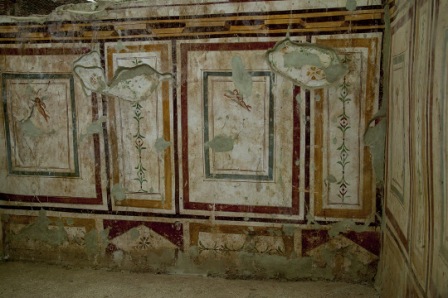
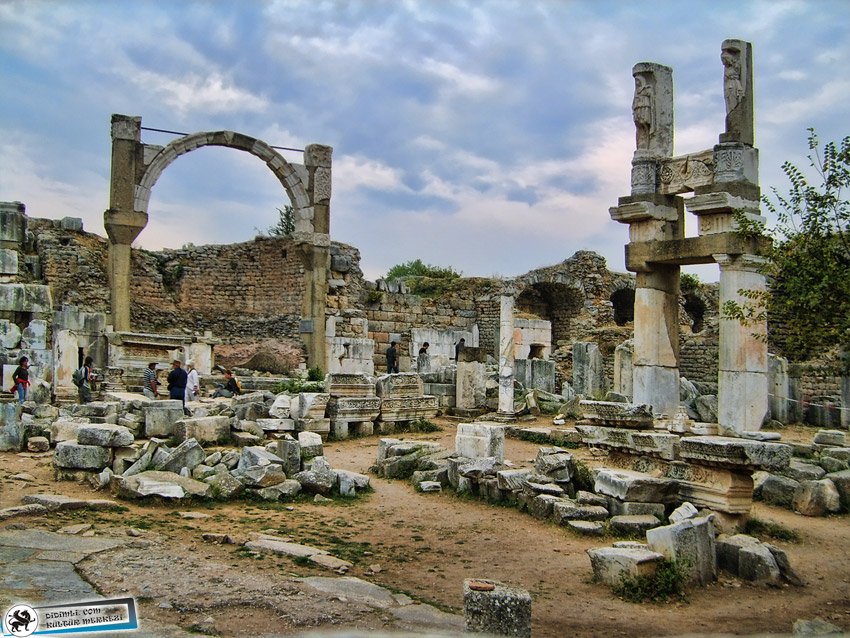
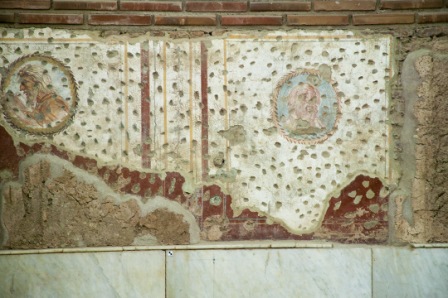



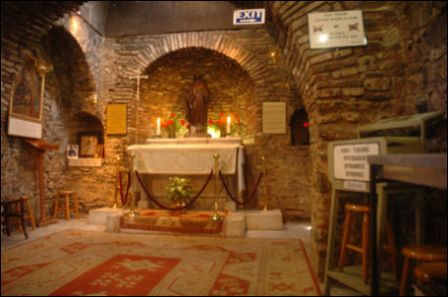



patlican karniyarik

CARROT SALAD
Recipe FOR THE DAY
PATLICAN
KARNIYARIK - split belly eggplant
ingredients
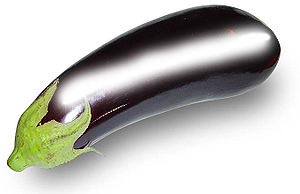
1 lb eggplant, peeled in stripes lengthwise, 1/2 ground meat, 2 onions,
cubed, 1/2 bunch parsley, finely choppped, 1 tomato, petite diced (for
the stuffing), 1 tomato, sliced in half moons (for the top) ,
green banana peppers, as many as eggplants, ground pepper, salt, 2 tbs
olive oil, frying oil
1 cup hot water
There are a couple things to be careful about when you're cooking with
eggplants. Buy eggplants right before you cook and pick the firmer ones;
eggplants tend to get soft in the refrigerator. And for this dish, do
not use huge American eggplants. Try to find cute little ones or Asian
eggplants
|
Click here
for TURKEY 101
GROUP JOURNAL
melitour home page
turkey 101 itinerary


